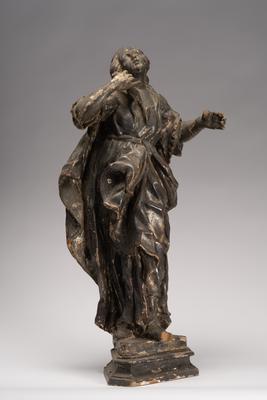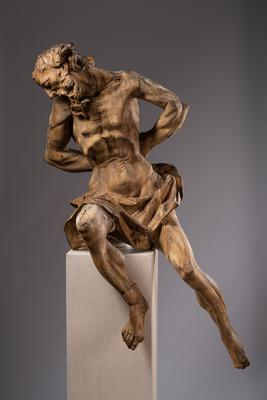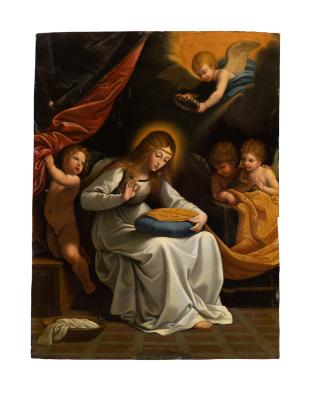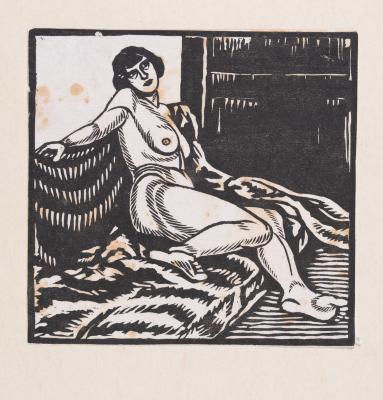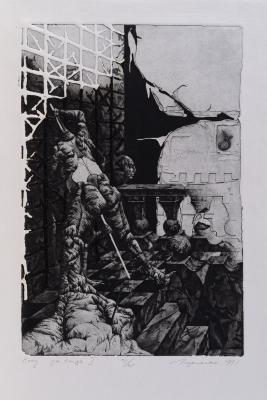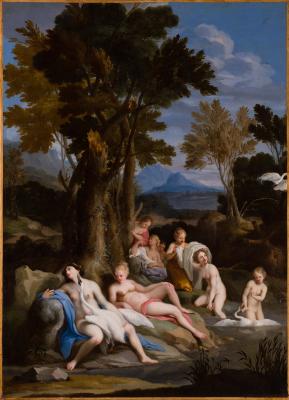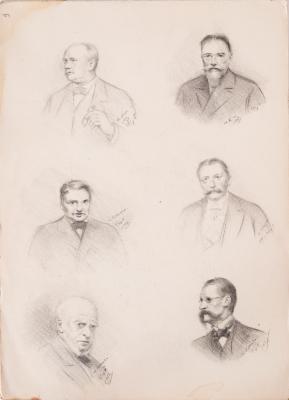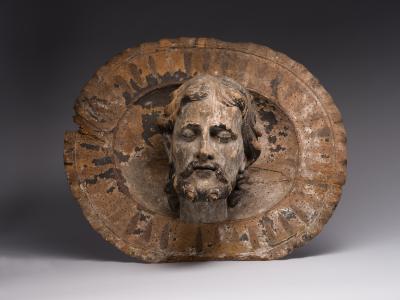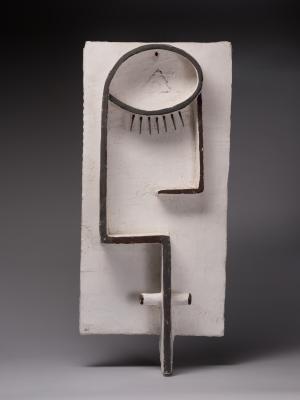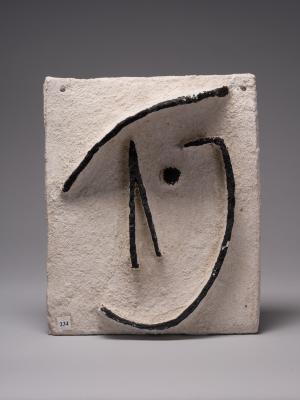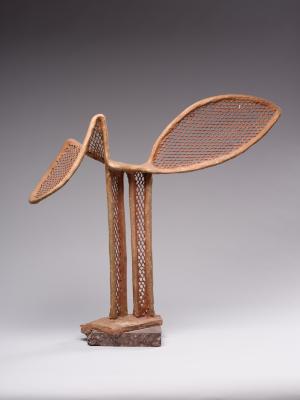In the seventeenth century, the burial of a prominent noble was accompanied by a ceremony in which the portrait of the deceased played a defining role. The coffin portraits were drawn "ad vivum" (as if alive) on a silver, copper, or tin plate. They had a hexagonal shape due to their placement on the coffin's edge. In the seventeenth century, it was strictly hexagonal; in the eighteenth century, the basis remained the same hexagonal shape but acquired a complicated baroque profile. The main requirement for such portraits was to be as similar as possible to the face portrayed. The artist was not allowed to idealise; the task was to capture the individual facial features in detail. The coffin portraits were widespread among the Lviv bourgeois. Despite their specific purpose, portraits were varied in colour schemes. Among them is a coffin portrait of an unknown woman. A hexagonal metal frame is decorated with a floral ornament with heads of angels. The woman's facial features are depicted in detail: her piercing gaze, arched eyebrows, and well-defined red lips, which stand out prominently on the overall light tone of her face. Her head is surrounded by ash-grey hair, neatly arranged in a high hairstyle. The woman is dressed in a fashionable gown made of red and blue fabric. Beletskyi believed that this work was a copy of the woman's portrait painted during her lifetime, and the portrayed woman was Polish or German by nationality.







